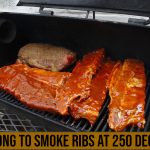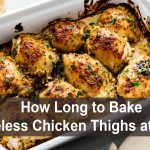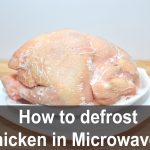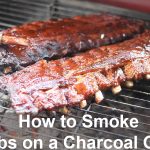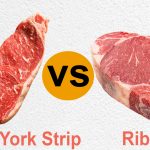Are you looking for a delicious way to prepare deer backstrap? Deer meat is the perfect choice for anyone wanting to put a spin on their weekly dinner routine. Not only is it packed with flavor, but deer backstrap also offers up lots of health benefits such as lean protein, iron and B vitamins.
But how exactly should you go about preparing this versatile and delicious cut of venison? In this blog post, we’ll provide step-by-step instructions on how to cook deer backstrap so that you can create an unforgettable meal each and every time!
What is a Deer Backstrap?
Deer backstrap is the tender cut of meat that sits next to the spine of a deer. It runs along either side of the deer’s backbone, and it is commonly used in dishes such as stir-fries, stews, and roast recipes. Like all types of venison, deer backstrap is extremely lean with a deep red color and rich flavor.
Venison Deer Nutrition:
Deer backstrap is an extremely nutrient rich food and a great source of lean protein, iron, B vitamins, and minerals. Because it’s so lean, deer meat also contains less saturated fat than many other types of red meat.
How To Prepare Deer Backstrap for cooking
When preparing deer backstrap for cooking, there are two main steps that you need to focus on: trimming and marinating. Let’s take a closer look at each step below!
Step 1: Trimming Your Deer Backstrap
Before you begin cooking your deer backstrap, the first thing you’ll need to do is remove any excess fat or sinew from the surface of the meat. This will help ensure that your dish turns out moist and tender, rather than tough and chewy.
There are two different ways to go about trimming your deer backstrap: you can use a sharp knife, or you can take it over to the meat counter at your local grocery store and ask them to do it for you. Whichever option you choose, make sure that you remove any large chunks of fat before cooking.
Step 2: Marinating Your Deer Backstrap
Before grilling or searing your deer backstrap, marinate it in a flavorful sauce or seasoning blend to add an extra layer of deliciousness to your dish. This step is optional, but highly recommended as it will help boost the flavor profile of your venison and keep the meat moist during cooking.
Your best bet is to start with a basic marinade or seasoning blend, such as olive oil, salt, pepper, and garlic. Once you’ve coated your deer backstrap in this simple mixture, let it sit for 1-2 hours before cooking.
Tools You’ll Need:
To cook deer backstrap properly, you will need the following kitchen tools:
- A sharp knife: to trim any excess fat from the surface of your deer backstrap
- A baking sheet to place your deer meat on while it’s in the oven
- A grill pan to sear your venison without burning it
- A marinating container to keep your meat moist during marination
- A meat thermometer this tool is essential for ensuring that your deer backstrap is cooked to perfection
Now that you know how to prepare your venison for cooking, let’s take a look at some delicious recipes that you can try! We’ve chosen three of our favorite ways to cook deer backstrap: seared on the grill, pan-seared in the oven, and roasted in the oven. Try them all and decide which method works best for you!
1. Grilled Deer Backstrap Marinade: Olive oil, salt, pepper, garlic – Coat your deer backstrap in this simple marinade blend before throwing it onto the grill to sear. This dish makes a great meal when paired with a fresh salad or roasted veggies.
2. Deer Backstrap Marinade: Soy sauce, apple juice, garlic – If you want to enjoy a classic Asian stir-fry dish made with deer backstrap, this is the marinade for you! Simply coat your venison in this mixture and throw it into a sauté pan over high heat for 5 minutes or until cooked to your desired doneness.
3. Deer Backstrap Roast Recipe: Rosemary, sage, thyme, salt & pepper – This easy roast recipe will work great if you’re cooking deer backstrap in the oven. Simply coat your venison in this special blend of herbs and spices, place it on a baking sheet with veggies and roast for approximately 15 minutes or until cooked through.
How to Cook Deer Backstrap in Oven
Step 1: Preheat your oven to 375 degrees F. Lay a large piece of aluminum foil on a baking sheet or roasting pan. This will be used for marinating your deer backstrap. For extra flavor, you can also use olive oil or butter on top of the foil to prevent sticking.
Step 2: Next, place your deer backstrap onto the foil, making sure to spread it out evenly. If your backstrap is still cut up into smaller pieces, you can either use a meat mallet or just your hands to gently flatten it out to an even thickness.
Step 3: Pour marinade over the deer backstrap, using about 1-2 tablespoons of marinade for every pound of meat. For best results, choose a marinade that has savory flavors like garlic and onion, as well as herbs such as rosemary and thyme.
Step 4: Place your baking sheet in the preheated oven and cook your deer backstrap for 15-20 minutes per pound. The total cooking time will vary based on how rare or well-done you like your meat.
Step 5: Once your deer backstrap is fully cooked, remove it from the oven and let it sit for 5-10 minutes before slicing. If you’re planning on serving it as part of a larger meal, this is a great time to get started on any side dishes or garnishes that you want to serve alongside your venison!
Step 6: Enjoy your delicious and healthy deer backstrap with the rest of your meal! You can keep sliced meat warm in an oven or microwave until everyone is ready to eat. Alternatively, you can also refrigerate leftovers for up to 3 days or freeze them for later enjoyment.
So there you have it – everything you need to know about cooking deer backstrap! By following these simple steps, you can create a delicious and healthy main dish for your family or friends to enjoy. Whether you’re looking for something special to serve on a weekly dinner rotation, or just want a unique way to spice up your next holiday meal, this venison recipe is sure to become one of your go-to favorites!
How to Cook Deer Backstrap on the Stove?
If you don’t have access to a grill or oven, it is still possible to cook deer backstrap in a variety of ways on your stovetop. Here are two popular methods for preparing venison on the stove:
1. Deer Backstrap Stir-Fry: Cut your deer backstrap into thin slices and add them to a hot wok or skillet along with some onion and garlic. Sear the venison over high heat until it is cooked through, then toss in some vegetables and/or rice if desired. Serve this as a complete meal with soy sauce, chili peppers, and other condiments as toppings.
2. Deer Backstrap Fajitas: Start by marinating your deer backstrap overnight in a mixture of olive oil, lime juice, and spices like cumin and chili powder. Then, slice the meat into thin strips and cook it in a hot pan or on a grill until slightly charred. Next, add your cooked deer backstrap to a warm tortilla along with sautéed peppers and onions, guacamole or other toppings of choice.
How To Know If Deer Backstrap Is Done ?
There are a few signs that you can look for to determine if deer backstrap is done cooking. The most obvious sign is that your meat will change color as it cooks. This can range from slightly pink on the inside (more rare) to light brown and firm on the outside (firmly cooked). Another sign to watch out for is whether or not the juices of your venison start running clear – this typically means that it is fully cooked through.
If you are unsure about how well-done your deer backstrap should be, simply cut into one piece with a knife or fork and take a peek at its interior. If your venison looks still red or undercooked, then set it aside and cook it for a few more minutes. If your venison is a light-brown color and fully cooked through, then you can remove it from the heat and serve it immediately.
In general, deer backstrap should be slightly pink or red on the inside when cooked to rare to medium-rare (depending on personal preference). For well-done meat, simply continue cooking until the desired level of doneness has been reached. With a little bit of practice, it will become easy to cook your deer backstrap to perfection every time!
The best way to tell if deer backstrap is done cooking is by checking its internal temperature with a thermometer. The recommended temperatures for various levels of doneness are as follows:
• Rare: 115-120 degrees
• Medium-Rare: 125-130 degrees
• Medium: 135-140 degrees
• Medium-Well: 145-150 degrees
• Well Done: 155+ degrees.
If you want to cook your deer backstrap to a very specific level of doneness, then you can use a cooking thermometer to test its internal temperature and remove it from the heat at that point. However, if you are looking for something simpler and more hands off, then simply follow these general cooking times as a guideline when firing up your stovetop or grill!
1/2″ Trimmed – 20 minutes,
1″ Trimmed – 25 minutes,
3/4″ – 30 minutes,
1″ – 35 minutes.
If you are unable to determine the thickness of your deer backstrap, simply start with these cooking times and check for doneness every 5-10 minutes until your venison reaches your desired level. In general, deer backstrap should be cooked until a meat thermometer inserted into its center reads at least 145 degrees F (medium-well). Be sure to let your deer rest for at least 10 minutes before serving it to give the juices a chance to redistribute throughout the meat.
How to Store Deer Backstrap
Deer backstrap can be stored in the refrigerator for up to 5 days, or in the freezer for up to 3 months. To store your deer backstrap in the fridge, wrap it tightly in plastic wrap or parchment paper and place it on a plate with a bit of space between each layer. This will help prevent your venison from getting overly wet and soggy as it sits.
If you are planning to freeze your deer backstrap, then it is best to slice it into thin strips before placing them in an airtight container or resealable bag. You can also wrap individual slices in parchment paper or aluminum foil if you do not have any storage containers available. When freezing raw deer backstrap, be sure to label and date your package so that you can easily find and use it later.
Whether you are storing your deer backstrap in the fridge or freezer, be sure to consume it within the recommended time periods for optimal freshness and flavor. If your venison starts to develop a strong odor or any kind of off-taste, then this is usually a sign that it has gone bad and should be discarded immediately. With careful storage and proper cooking techniques, however, you will be able to enjoy delicious and tender deer backstrap for days to come!
How to Reheat Deer Backstrap
Deer backstrap can be reheated from the refrigerator or freezer using any of the following methods:
• Stovetop: Place your deer backstrap in a skillet and toss it with a bit of olive oil or butter over medium heat. Cook for 3-5 minutes per side until thoroughly heated through, turning only once during cooking. You can also place smaller pieces directly on the stove burner (or grill) and cook them directly over low to medium heat until warmed through.
• Microwave: Rip off a piece of parchment paper large enough to wrap around your deer backstrap, then microwave it on high power for 1 minute per slice. Cut open your venison pack at one end and unwrap one half before tossing it with a little bit of butter or olive oil and re-wrapping it tightly. Repeat this process until your deer backstrap has been reheated to the temperature you desire.
• Oven: Preheat your oven to 350 degrees F, then wrap your deer backstrap in foil and place it on the middle rack for 15-20 minutes or until thoroughly heated through. You can also use this method to reheat smaller pieces by wrapping them in parchment paper and placing them directly on an oven-safe wire rack.
Regardless of how you choose to reheat your deer backstrap, be sure to take its internal temperature with a meat thermometer before serving it to ensure that all harmful bacteria have been eliminated. Ideally, your venison should register at least 145 degrees F or higher to be considered safe for consumption.
Whether you are simply reheating leftover deer backstrap from a previous meal or cooking it from scratch, these simple tips will help you achieve delicious and tender results every time!
What to Serve with Deer Backstrap?
A recipe for Deer Backstrap with Garlic, Tomato, Basil and Balsamic. This is an amazingly delicious meal. The tomato/basil combo is so good it’s hard to believe deer meat tastes this good!
Deer backstrap is one of the most prized cuts from a deer. It’s tender and juicy, making it great for grilling or sauteeing, but the very best way to cook it might be by baking! That’s right – baking can really bring out the tenderness and juiciness of this tasty cut. So if you want something special for dinner tonight (or even next week), try this baked deer backstrap with garlic, tomatoes, basil and balsamic. You won’t be disappointed!
Ingredients:
1 deer backstrap, cut into two equal pieces
2 Tbsp. olive oil
4 cloves garlic, minced or pressed
1 pint grape tomatoes, halved lengthwise or quartered if larger size tomatoes are used (depending on preference)
½ cup fresh basil leaves, chopped roughly or torn by hand if preferred (less chopping involved!) You can also use dried basil for this recipe if you don’t have any fresh on hand. Just use about ½ tsp of the dried version in place of the 1/2 cup of fresh basil. It will still taste delicious! I should mention that there isn’t much chopping involved with this recipe – which is the best kind of recipe, right?
4 Tbsp. balsamic vinegar (this is for drizzling and not for cooking)
Salt and pepper to taste – salt will probably be needed but as always, you’ll have to test it yourself because every cut of meat is different and some might not need any additional salt. You can also add a bit more if you wish. As for the pepper – start with ¼ tsp each of both salt and black pepper, then increase if needed after tasting!
Directions:
Preheat your oven to 350 degrees Fahrenheit. Place a rack inside an oven-safe baking dish – this will allow excess juices to drain off when baking instead of sitting in the dish and becoming overly salty.
In a small bowl, mix together the minced garlic, chopped basil leaves and balsamic vinegar. Set aside for now.
Heat up your olive oil in a large skillet over medium-high heat. Pat the deer backstrap dry with paper towels and season both pieces with salt and black pepper – again, start light and add more if needed after testing. Add to the hot pan, cooking each side for about 1 minute per side to sear it before baking (you can skip this step but searing does help keep in juices!).
Place cut-side down on baking rack inside your oven-safe dish so that excess fluid will drain off as it cooks; cover with foil or put another baking dish on top to prevent the juices from burning.
Spoon your garlic/basil/balsamic mixture evenly over each piece of deer backstrap, then arrange the halved or quartered tomatoes over top. Place in oven and bake for 20 minutes, then remove foil and cook an additional 20-25 minutes (for a total of 40-45 minutes). The tomatoes should be soft and slightly wrinkled, while the deer will be tender and juicy! You can also use this time to make up some roasted potatoes or veggies to go along with it – just toss them into the same baking dish as the backstrap while they’re cooking!
When done, place individual servings of basil/tomato-covered deer backstrap onto plates and drizzle with olive oil, balsamic vinegar or a bit of Dijon mustard as a tasty finishing touch. Enjoy!
Common Mistakes To Avoid When to Cook Deer Backstrap
1. Not Patting It Dry:
When you buy your deer backstrap, it will usually come wrapped in paper towels. This is helpful because they help absorb any excess moisture from the meat – if you don’t have paper towels on hand, simply place the piece of deer into a large plastic bag and seal it before putting it in the fridge for about 30 minutes to an hour. When ready to cook, remove from fridge and pat completely dry with paper towel or kitchen cloth.
2. Cooking It Too Long:
Deer backstrap can be incredibly tender just after being removed from its kill (which might not sound appetizing but I promise it tastes good!). So unless you prefer a more well-done steak-like texture, keep your cooking time on the shorter side (usually 20 minutes or so). To ensure that you are keeping your cooking time as short as possible, follow the steps I outline above in my recipe – they’re there to help!
3. Not Letting It Rest:
Most meats benefit from a rest period before being sliced and eaten – but it is crucial when it comes to deer backstrap because of its high moisture content. Simply put, this meat needs some extra time before serving… So be sure to allow at least 5-10 minutes after removing from heat for the deer backstrap to cool slightly and redistribute all of its juices evenly throughout the piece. This ensures that each person gets a nice tender and juicy piece of meat.
FAQs:
Q: Is it safe to eat deer backstrap?
A: Yes! As long as you are using a reputable butcher who follows proper sanitation and handling standards, deer backstrap can be a great choice for those looking for lean protein without animal fat. Also keep in mind that wild game is allowed on the Whole30 Program as well, so if you’re doing an elimination diet this is a great option (just make sure you aren’t feeding your hunting dogs anything with left-over food particles on it!).
Q: Can I cook deer backstrap in the oven like most meats?
A:Yes – but with some caveats. Deer backstrap shouldn’t be cooked too long or at too high a temperature or it can quickly become dried out. I recommend checking the temps with a meat thermometer (I like this one) to ensure that you are cooking your deer backstrap no higher than 140 degrees F and for no longer than 30 minutes (if thicker, higher temp may be OK but will be harder to test).
Q: What should I serve with deer backstrap?
A: Deer backstrap is incredibly lean – so pairing it with a side of roasted veggies or potatoes should help keep things in balance! My “How To Cook Deer Backstrap” guide has some great suggestions on how to make up sides easily while also keeping prep time down.
Q: What does deer backstrap taste like?
A: If cooked properly, it should taste similar to beef – just a bit more gamey. It will also depend on what season the deer was hunted during as well! In any case, I recommend adding some spices for flavor and avoiding salt until the end. This can help balance out the flavors if you’re unsure of how the meat tastes or if it comes from an older deer that might have a slightly stronger flavor (which isn’t necessarily bad but not everyone likes!).
Q: Does deer backstrap need to be marinated?
A:Nope! I almost always like to add a dry rub or sauce when cooking beef, pork or lamb – but many times, simply adding salt and pepper is enough. The teriyaki glaze in my guide works great for flavor without over-complicating things!
Conclusion: How To Cook Deer Backstrap Like A Pro For Dinner Tonight!
There’s nothing quite like a juicy piece of steak from the grill on a summer day… But what about when you don’t feel like grilling meat at all? Or maybe it’s winter and cold outside? In either case, learning “how to cook deer backstrap” is a great skill for any hunter or meat-lover to have!
With the tips I outlined above, you’ll be able to easily turn your deer into tasty tender steak-like pieces of meat – whether you have experience under your belt or not. So pick up some extra venison next time you’re at the butcher and get cooking today!

William Lariviere is a chef and restaurateur with over 25 years of experience in the food industry. He is the owner and operator of Swartzsdeli.com, an online restaurant that specializes in gourmet sandwiches and salads, grill & smoke. He likes to share experience, food, recipes cooking knowledge as well as reviews about restaurant and kitchen products.
William’s goal is to provide his customers with healthy, delicious food that is also affordable and develop Swartzsdeli.com into a comprehensive information site specializing in cooking and cuisine to a new level to help reach a wide range of housewives and readers.

